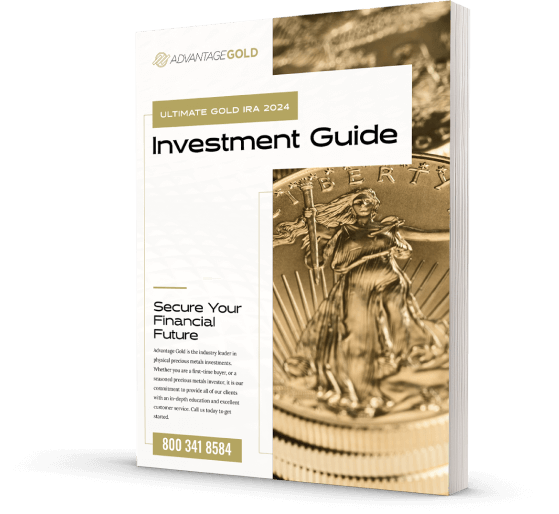
Curious about the volatility of stocks in 2025? This article dives into the key drivers like central bank actions, global economic trends, and inflation. Knowing these can help you navigate and protect your investments.
Central bank decisions have always played a pivotal role in shaping the financial markets, and 2025 has been no exception. The US central bank, in particular, has captured headlines with its aggressive stance on interest rates and exchange rates. High interest rates contribute to investor concerns about economic growth and create market uncertainty. When interest rates rise, borrowing costs for companies increase, which can lead to reduced investments and slower economic expansion.
Policy uncertainty has also heightened market risks relative to consumer expectations. Investors are left in a state of limbo, unsure about the future direction of monetary policy. This uncertainty is often reflected in increased market volatility and recent volatility as traders react to every hint of policy change.
Furthermore, investor concerns about federal spending have added another layer of complexity. Many fear that reduced government spending will hinder growth and increase unemployment. These fears are not unfounded; when the us government tightens its belt, it can lead to decreased demand for goods and services, further dampening economic factors and prospects, ultimately affecting the cost of living in the recession us economy.
Government-imposed tariffs have also played a significant role in decreasing consumer and business sentiment, contributing to worsening market conditions. Tariffs can increase costs for businesses, which are often passed on to consumers in the form of higher prices. This can lead to reduced consumer spending, negatively impacting overall economic growth, as consumers feel increasingly taxed.
While the long-term effects of tariffs may lead to stabilization through deals, the short-term disruptions are often felt acutely in the stock market. Companies directly affected by tariffs may experience reduced profitability, leading to lower stock prices and increased market volatility.
Consumer sentiment saw its largest month-over-month drop in February, indicating a significant shift in market outlook. When consumers lose confidence in the economy, it often leads to reduced spending, which in turn affects corporate earnings and stock prices. This drop in sentiment is both a cause and effect of market volatility, creating a vicious cycle that can be hard to break.
Global economic uncertainty is another major factor contributing to market volatility in 2025. In times of economic volatility and geopolitical tensions, investors often turn to gold as a safe haven. Unlike stocks, which can be highly volatile, gold is considered a stable store of value, providing a sense of security in uncertain times.
During periods of uncertainty, many investors tend to prefer safer investments such as gold or government bonds. This shift in investment strategy is driven by the desire to protect capital from the risks associated with volatile markets. As a result, demand for these safer assets increases, further driving up their prices. Many investors have invested in these options and choose to invest in them.
Gold has been proven to maintain its value during economic downturns, often increasing when stock markets decline. This inverse relationship makes gold an attractive option for diversification, helping to balance the risks in an investment portfolio.
The recent surge in demand for gold bars is evident as central banks purchased over 1,000 metric tons of precious metal and other precious metals, the all time high in more than 50 years in recent years. This massive buying spree underscores the prevailing economic uncertainty and the desire for stable assets.
Gold prices have also significantly increased during trading tensions, reflecting its role as a safe haven amid geopolitical concerns. When trade relations between major economies sour, it introduces additional risks to the global economy, prompting investors to seek refuge in gold.
Moreover, gold outperforms the index by approximately 1.65% on average during recessions compared to stock indexes. This outperformance is a testament to gold’s resilience and its ability to provide a buffer against economic downturns, making it a valuable component of any investment strategy during volatile times.
Central bank policies, with their interest rate changes and tariffs, have significantly influenced market volatility by creating uncertainty and affecting investor sentiment. These policy decisions have led to increased market risks and a complex investment landscape.
Global economic uncertainty has also played a crucial role in driving market volatility. The tendency of investors to seek safe havens like gold during uncertain times highlights the value of stable assets in protecting wealth. The recent surge in demand for gold and its outperformance during recessions underscore its importance as a diversification tool.
In conclusion, understanding the factors behind stock market volatility in 2025 can help investors make informed decisions. By considering the impacts of central bank policies, global economic uncertainty, and inflation, investors can better navigate these turbulent times and safeguard their financial future.
Central bank policies significantly impact the stock market by affecting interest rates and investor sentiment, which can lead to increased market volatility. Changes in these policies often create uncertainty that influences investment decisions.
Investors turn to gold during economic uncertainty because it is seen as a safe haven asset that retains its value when stock markets are volatile. This property typically leads to a rise in gold prices as confidence in other investments wanes.
Inflation negatively impacts stock market performance by weakening consumer sentiment and increasing market volatility. As a result, investors often turn to alternative assets like gold to safeguard their investments.
Investing in physical gold during inflationary periods offers protection against currency devaluation and helps diversify your investment portfolio, ensuring a safeguard for your wealth. Its tangible nature further enhances its appeal as a stable asset in uncertain economic times.
A financial advisor can effectively guide you in constructing a diversified investment portfolio that includes assets like gold to protect against inflation. Their expertise ensures that your investments are strategically positioned to mitigate the impacts of rising prices.

Please note that Advantage Gold and its representatives are not licensed or registered investment advisers, attorneys, CPA’s or other financial service professionals. We do not offer or render any legal, tax, accounting, investment advice or professional services. Additionally be aware that precious metals carry risk of loss and are not a suitable investment for everyone. Past performance is not necessarily indicative of future results and you should always consult your financial and tax professional and carefully evaluate all risks associated with the acquisition of precious metals before making the investment.
The statements made on this website are opinions of Advantage Gold LLC. Past performance is not necessarily indicative of future results. Precious metals, Gold American Eagles, Proof Gold American Eagles, certified gold coins, as well as gold and silver bars carry risk and investing in precious metals directly or through an IRA is not suitable for all investors. Precious metals and coins (i.e. Canadian Gold Maples, Canadian Silver Maples, American Gold Eagles, American Silver Eagles, Proof Gold American Eagles, Proof Silver American Eagles, Certified Gold American Eagles, Numismatic Gold Coins) may appreciate, depreciate, or stay the same depending on a variety of factors. Precious metals can and will fluctuate unexpectedly. Advantage Gold cannot guarantee, and makes no representation, that any metals purchased (i.e. .999 gold bars, .9999 silver bars, or any gold coins) will appreciate at all or appreciate sufficiently to produce a profit above and beyond the mark up/ commissions charged whether they are bought for direct delivery or inside of a precious metals IRA. The decision to purchase or sell precious metals with cash or inside of a Gold IRA or a Gold Backed IRA, and which precious metals to purchase or sell, are the customer’s decision alone, and purchases and sales should be made subject to the customer’s own research, prudence and judgment. By accessing any Advantage Gold content, you agree to be bound by the terms of service. Review the terms of service and privacy policy.
*Consult your tax Advisor.